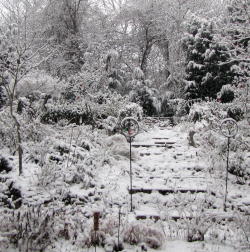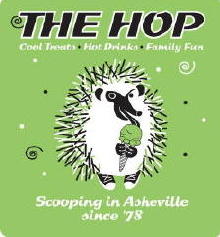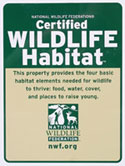
Hunting down the wildflowers for Gail’s Wildflower Wednesday meme is always enjoyable. The main problem is determining which ones are natives. The last deciduous azalea to bloom here, Rhododendron prunifolium is right on schedule, late July. This shrub was purchased a couple of years ago at the University of Tennessee Bloom Day festival, in bloom around the end of July. The leaves are a more chartruese color which sets off the red orange flowers nicely. It is a native.

New to the garden last fall, from Arrowhead Alpines are three little Verbena stricta plants. As these small specimens grow and mature through the seasons, more height and girth are expected. For now, all we are looking for is alive, flowers are gravy. Natives.


By far the longest blooming period for any wildflowers here belongs to the ox eye daisy, Leucanthemum vulgare. Some of the petals are showing this curly characteristic. Nice natives! Added: These are native all right, but to the UK, not the US! I still like them, though.

Common and easy, good descriptions of how wildflowers should be, apply to Gaillardia x grandiflora. The bright colors stand up to the intense summer sun and lack of rainfall without blinking. There is a tiny little plant with ball like flowers mixed in, does anyone know what it might be? Is it a native?

July sees the beginnings of the Big Guy bloomings. Even though the florets are not fully open, the Joe Pye, Eupatorium purpureum subsp. maculatum ‘Gateway’ gives a stunning performance back in the old Ferngully area. The heads are huge, the plants are tall and the pollinators are waiting at that gate to begin feasting once the petals peel back to reveal the goodness inside. Natives.

Unfortunately named Sneezeweed, Helenium autumnale is just beginning to bloom. Started from a mixed packet of seeds last year, several colorways of reds and yellows were a pleasant surprise. Many did not return over the winter, but this plant is strong and healthy looking, having been moved from the shed bed to more pampered environs in the yellow/white bed. (Closer to the hose spigot.) A post about this native flower can be seen by clicking here-Helen’s Flower.

A most beautiful seedhead is that of Queen Anne’s Lace, Daucus carota. Every phase of this plants life, from lacy, chic green foliage, white snowflake flowers and caged prickly seeds is exquisitely detailed. It can be seen along every roadside and non-cultivated field here, yes, native. No, not native, but it has been around for so long it is considered one of us! (Thanks Monica!)

Hooray for the seedheads that managed to mature and open on the Asclepias tuberosa! Normally they shrivel up and produce no viable seeds. These little darlings will be scattered and planted carefully for this butterfly weed is a plant that is hardly a weed at all. There is no such thing as too much of it. Happy to report, native.

The same can be said for Rudbeckia fulgida ‘Goldsturm’. There are finally seedlings of blooming size, much to the delight of bees and butterflies like this little Pearl Crescent. Something is chewing the gold petals without mercy, probably the dastardly grasshoppers. They are always a problem in hot, dry summers. There is no such thing as a summer here in southeast Tennessee that is not hot and dry.

It was thrilling to find some of these came with the property Datura metel plants this year. Even though seed was saved and scattered, there were no plants at all last year. 2010 has shown several, one already blooming size. We love their exotic good looks, considering them friendly aliens.

Public Service Announcement: This foliage that looks something like marigolds is ragweed, Ambrosia sp., seen this past weekend at offspring Semi’s house. Mr. Semi is so allergic to this plant, among many other things, that it requires doctor visits and prescription pharmceuticals. I have shown both of them what this looks like, even pulling much of it myself in her garden, and yet it still is growing there. I believe the term is passive aggressive on her part. I cannot explain the Mister’s lack of enthusiasm for eradicating it from their property. You can lead a horse to water….

Also seen at Semi’s is this member of the asteracea family, a Hawkweed of some kind, most likely Hieracium paniculatum. Native.

Here it is in situ. This is a true wildflower haven, showing what becomes of a garden when there is no actual gardening done. The pollinators love it and things sort of work it out by themselves, led by the natives.
Frances









The Gaillardia is doing wonderful in the garden this year. My Joe Pye weed has been run over by the Monarda this year, will have to fix that problem for next year. But your Asclepias tuberosa is ahead of mine as the seed heads are still green and have not opened. Take care and have a great day.
Hi Frances,
Very nice, I do love Wildflowers and am always thrilled to see so many people embracing the idea of using natives in the garden to help with the wildlife.
Good morning Frances~I am so glad, beyond excited even, to have you on the bandwagon with me to celebrate wildflowers! The critters thank you, too. Love the hawkweed and am sorry that grasshoppers are munching on the Susans! What a year for bug damage. Love having a piece of Ferngully’s Joe Pye! He’s not as tall as yours, but he’s getting there. Scatter those butterflyweed seeds~they need a cold, wet winter and should take off~Fantastic photo of the caged QAL seeds! gail
That rhododendron is beautiful. I think I saw it on Volunteer gardener and put it my mind to look for. So great it blooms late. All your lovelies are stunning.
Hi Frances, It is amazing how many natives you can find when you look around! Didn’t know ‘Goldsturm’ was considered native – I do love it though. I gathered seeds from butterfly weed last year and had no luck – will you just scatter them or winter sow?
Hi Frances: It is nice to see that we grow the same plants in the garden. Can’t grow azaleas in this alkaline soil though. The mystery plant with the gaillardia maybe in the mint family. I see hairy stems that are square.
So many wild flowers! I loved the Rudbeckia with the butterfly. Gaillardias are a favourite with public gardens here, as they need very little water and care.
Beautiful blooms Frances. I have some datura blooming in the garden and I haven’t sowed the seeds for quite a few years. Perhap one of the prickly seedpods fell off and it has taken that long for the plant to develop.
Nice Rhododendron! I had no idea that there were any that bloomed that late. I am glad to know what Ragweed looks like now as well. I believe that is the plant that makes my allergies go crazy in the fall.
Jake
Morning, Frances!
Stopping by to say hi… I’ve not had much luck with Datura metal. Yours looks stunning.
warm mid-summer wishes to you.
Very attractive gang of wilds! Love the photos of the seedheads as well as the blooms.
My Joe Pye decided to beat all records this year and got about 8 feet tall.
Ooh, the Queen Anne’s Lace seedpod is so interesting – you’ve captured it well in your photo. And the butterfly – you must have a great time watching all the butterflies in your garden. We’ve seen only a few this year and have been super excited each time. Planting butterfly-attracting plants is on the to do list, but it’s so long that it never gets all the way done.
We have a native Queen Annes lace here too Frances but its seedheads look nothing like the beauty you have photographed. So many of your natives are plants that I would love to be able to grow successfully each year in my garden. I don’t think any of my Heleniums have survived.
Last week when we were out on our walk we watched one poor man digging up all the ragweed he could find in his field as he has 3 horses and its deadly for horses to eat.
“All we are looking for is alive, flowers are gravy”…no matter what you’re writing about, Frances, there’s always at least one gem like this in your narratives that makes me smile:) I love all your natives, and for once I share some of the same plants. My Joe Pye weed–in its second season–is really living up to its promise this year. The butterfly weed has also taken off–I’ll have to look to see if it’s forming seeds.
I also share a little in common with Semi–I do know what ragweed looks like and try to keep it from encroaching on the garden, but around the farm buildings it’s another story. No wonder I’ve been sneezing and wheezing this summer:)
You have a lot of natives there girl 🙂 All so pretty too… The iris weaving is interesting…
Could the mystery plant be marsh bedstraw, Galium tinctorium? I can’t see any leaves so not sure.
Lots of lovely natives in your garden Frances, and Semi’s too. The azalea is so pretty – I don’t usually think of them blooming this time of year. The daisies look so cool and fresh, in spite of the heat. Queen Anne’s lace is one of my very favorite wildflowers.
I love that Gail started Wildflower Wednesday. It’s such a treat seeing the natives growing in everyone’s gardens.
That first hawkweed picture is very trippy-hippy.
Wow, amazing! It sure is a big country, I know nothing about a lot of those plants. Love the azalea in the first picture… Great color!
Oh, crud, I hate to hear that you’ve already seen ragweed seedlings. The Executive Producer is highly allergic, too. Fall is not a good season for him!
The other wildflowers are lovely!
Im amazed to note that the Rhodendron you have in the first picture look so much like a hibiscus flower. All the more to note that you keep a Datura as they are very much feared for their poisonous reputation.
Have a nice day hunting for a native one though.
A stunning post, Frances! The roadsides here are blanketed with Queen Anne’s Lace too … one of my favorites and fun to photograph.
I adore Verbena stricta but my seeds didn’t come up. I’m going to maybe dig out a plant from my friend’s garden. Also love Joe Pye. Queen Anne’s lace is indeed awesome, but it’s not, as far as I know, native. It came from Europe and has been here so long and is so prevalent, it sure seems that way.
You have some real beauties here Frances. My Butterfly weed has some seed pods this year. I hope they become viable and I get a bunch of new plants. I would like to have a wide swath of them. Ilove that orange color.
Hi Frances! What a lovely post and such stunning photos! I particularly like the Azalea – the red and the lime green are such an incredible color combination.
Hi Frances, The Joe Pye is a native here too… at least I think so … I love its full large form. You capture two plants in seed that I too enjoy … the Queen Anne’s Lace and Milkweed photos are great… especially love the Milkweed pods… it always amazes me how that milky liquid turns to silk. ;>)
Frances there is much controversy as to what constitutes a native plant. As we know when the sailors discovered the new world and came onshore emptied their matresses of BEDSTRAW complete with their seeds. so….